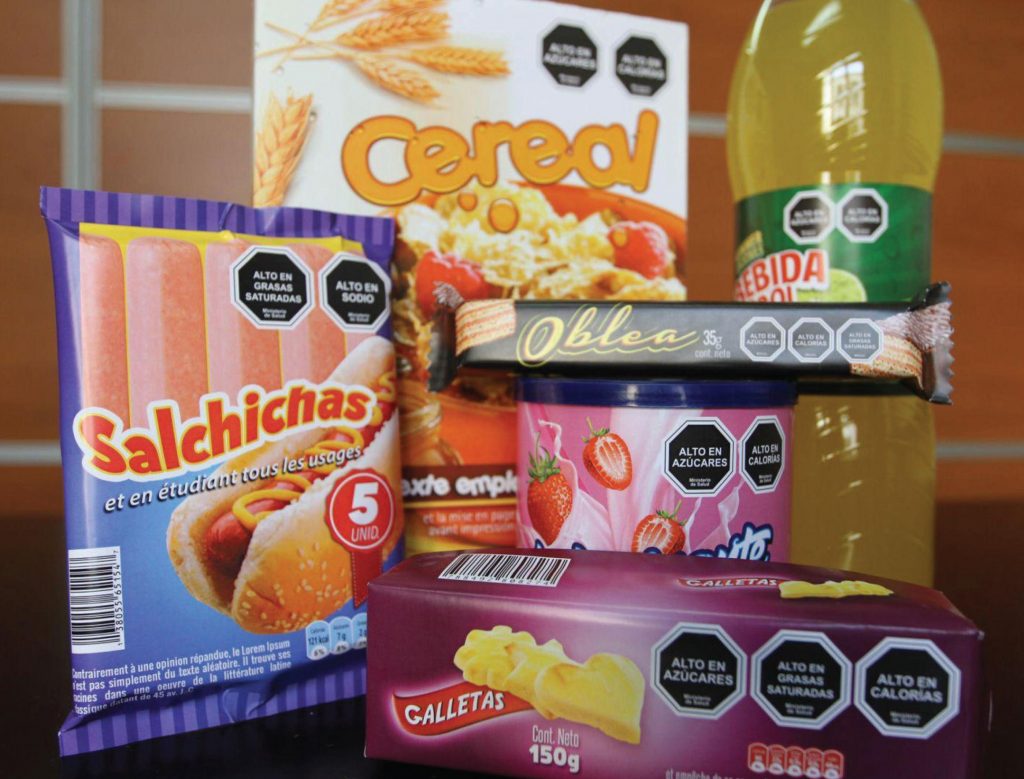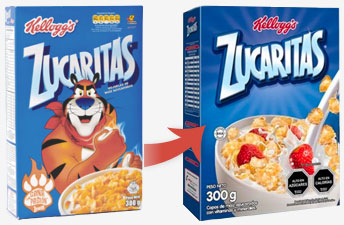Two recent studies conducted by researchers from the Global Food Research Program at UNC-Chapel Hill and the University of Chile have found that in the first phase of Chile’s Law of Food Labeling and Advertising, consumers’ beverage purchases contained less sugar and more non-nutritive sweeteners (e.g., Aspartame, Stevia, or Sucralose), but overall beverage sweetness stayed the same.

The requirement under Chile’s law for products high in calories or added sugar, salt, saturated fat to carry a front-of-package warning label has prompted the food and beverage industry to reformulate and introduce new products in order to avoid regulation. For example, companies have reduced the amount of added sugars in drinks to fall below the law’s sugar threshold, while replacing some of that sugar with non-nutritive sweeteners to maintain a similar taste. One study found that the share of beverages in Chile containing non-nutritive sweeteners increased by more than 10% after the law came into effect.
Taste test: beverage sweetness
In a study published in Frontiers in Nutrition in October 2022, researchers found that Chile’s policies were not associated with changes in overall sweetness taste of the beverages consumers bought, despite evidence of product reformulation to contain less sugars and more non-nutritive sweeteners (which can taste 10–20,000 times sweeter than sugars).

“We wanted to look at overall change in sweetness to understand what consumers were being exposed to, as a result of reformulation,” said Natalia Rebolledo, postdoctoral researcher at the Center for Research in Food Environments and Prevention of Nutrition-Related Chronic Diseases (CIAPEC) at the University of Chile and the study’s first author. “We focused on beverages because they are the main dietary source of added sugars and non-nutritive sweeteners in the Chilean diet.”
For this study, researchers analyzed the weekly grocery purchases of over 2,000 households before and after the labeling law began and evaluated the total sweetness of purchases. They did this by creating a “sweetness index” to measure and compare levels of non-nutritive sweeteners, total sugars, and total combined sweetness in each beverage purchased, taking into account the unique levels of sweetness tastes from non-nutritive sweeteners and sugars. The team used data from the Chilean Nutritional Facts Panel, which provided the actual amounts of total sugars and non-nutritive sweeteners included in the drinks purchased by study households.
Key findings during Phase 1 of the law:
- Total sweetness of the beverages purchased by consumers did not change: Sweetness from non-nutritive sweeteners increased but was offset by less sweetness from sugars. This indicates that companies likely aimed to keep their products as similar as possible to the original taste profile.
- Sugars are still the main source of sweetness for beverages, contributing 59% of total sweetness measured.
- Researchers observed no differences in sweetness consumption by household education level, assets, or presence of children in the home.
This is the first study to analyze whether beverage sweetness changed based on the type of sweetener used (sugars and/or non-nutritive sweeteners) after the implementation of the Law of Food Labeling and Advertising in Chile.
Sweetener purchases
The team’s next study, published in Current Developments in Nutrition in December 2022, examined changes in purchases of foods and beverages sweetened with non-nutritive and caloric sweeteners after Phase 1 of the law.
Using the same dataset of weekly grocery purchases from over 2,000 households, researchers analyzed the sweetener content of purchased foods and beverages before and after the labeling and marketing law began. They created four product categories based on the types and combination of sweeteners used in each product purchased:
- No added sweeteners used;
- Caloric sweeteners used, but no non-nutritive sweeteners used;
- Non-nutritive sweeteners used, but no caloric sweeteners used; and
- Both caloric and non-nutritive sweeteners used.
Researchers then analyzed products purchased products in each category before and after the law.
Key findings during Phase 1 of the law:
- Percent of households that purchased beverages sweetened with any non-nutritive sweeteners increased 4.2 percentage points (from 88% of households to 92.2%), driven mostly by an increase in households buying drinks containing only non-nutritive sweeteners (52.4% of households to 64.5%).
- The proportion of households purchasing beverages with only caloric sweeteners dropped 6 percentage points (from 92% of households to 86%). This indicates that households substituted some caloric beverages with beverages containing some amount of non-nutritive sweeteners.
- The daily purchase volume of beverages sweetened with any non-nutritive sweetener increased by 25 mL per person, or roughly 27%. Most of this increase was from households buying more drinks containing both non-nutritive and caloric sweeteners (increased 17 mL per person per day).
- Households bought 17% less unsweetened beverages, by volume (–31 mL per person per day), and the proportion of study households that purchased any unsweetened beverages dropped 2%.
- The authors found minimal changes in sweetener purchases from foods, possibly due to the more strict thresholds in the law for sweeteners in beverages compared to foods.
This is the first study to analyze the change in purchases of sweeteners in food and beverages after the implementation of the Law of Food Labeling and Advertising in Chile.
Both of these studies add to previous research evaluating the impact of Chile’s Law of Food Labeling and Advertising on intake, including a study from the same research team finding that preschoolers increased their non-nutritive sweeteners intake by 14 percentage points in the first year of the law.
Rebolledo says of their findings, “It is positive that beverages did not get sweeter as a result of higher non-nutritive sweetener use. It appears that both the beverage industry and consumers are substituting caloric sweeteners with non-nutritive sweeteners, which could have long-term health impacts that we need to better understand. We need to continue monitoring the following phases of the law to see if Chileans changed their purchasing habits after the requirements for warning labels and marketing became stricter.”
This research was funded by Bloomberg Philanthropies, National Institutes of Health, National Commission for Scientific and Technological Research (CONICYT), and Becas Chile Doctorado 2017.
AUTHORS
Natalia Rebolledo
Maxime Bercholz
Linda Adair
Camila Corvalán
Shu Wen Ng
Lindsey Smith Taillie
What are non-nutrititive sweeteners?
Non-nutritive sweeteners are sweeteners that have intensely sweet taste and typically do not contribute calories or are very low in calories. Non-nutritive sweeteners can be naturally occurring/derived from plants (e.g., sorbitol, xylitol, erythritol, stevia glycosides, monk fruit extract) or synthetic/”artificial” (e.g., aspartame, saccharin, sucralose, or acesulfame potassium).
FACT SHEETS

Read more about the evidence for front-of-package labels and marketing restrictions.

Learn more about Chile’s policies and our evaluation work there.